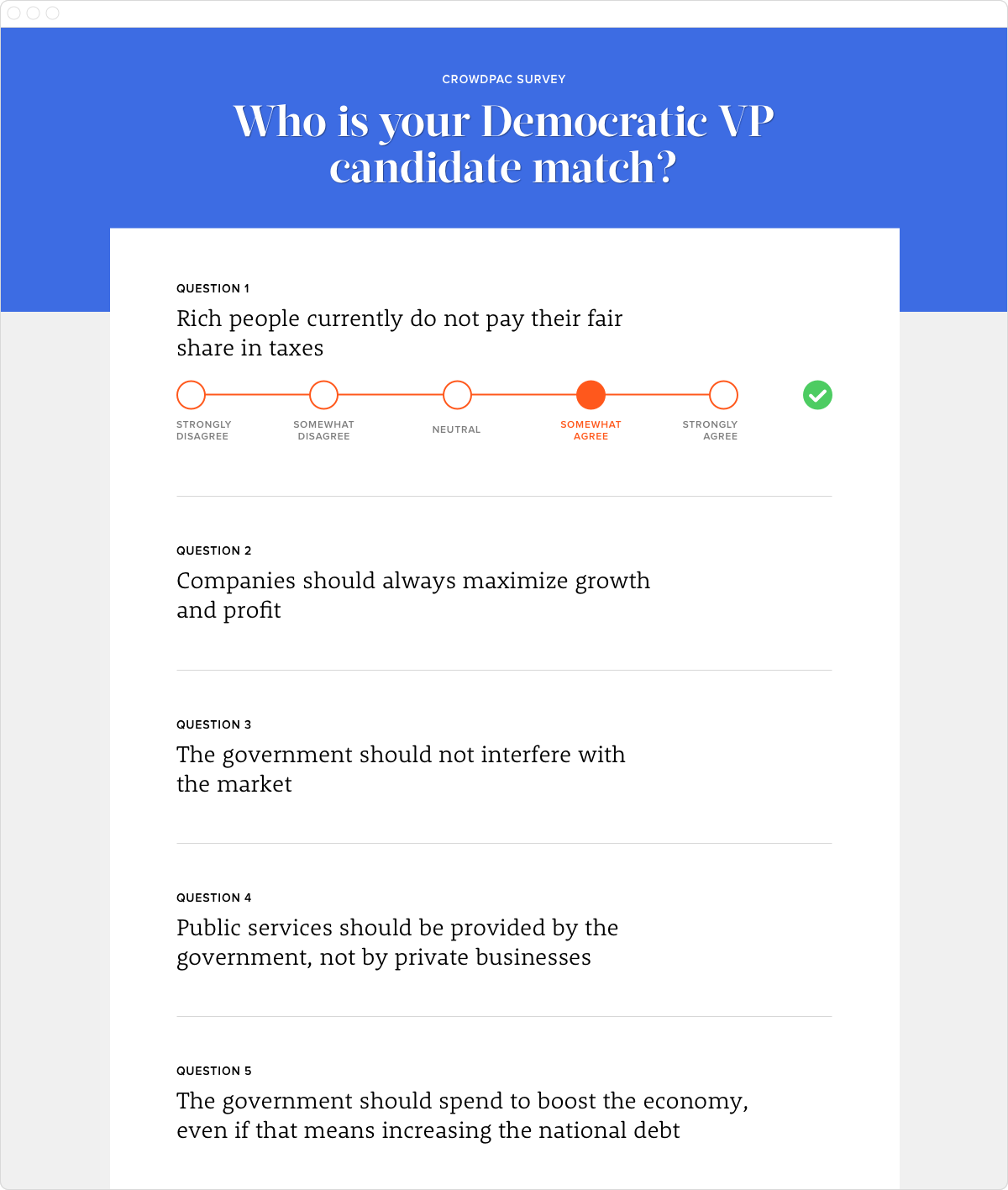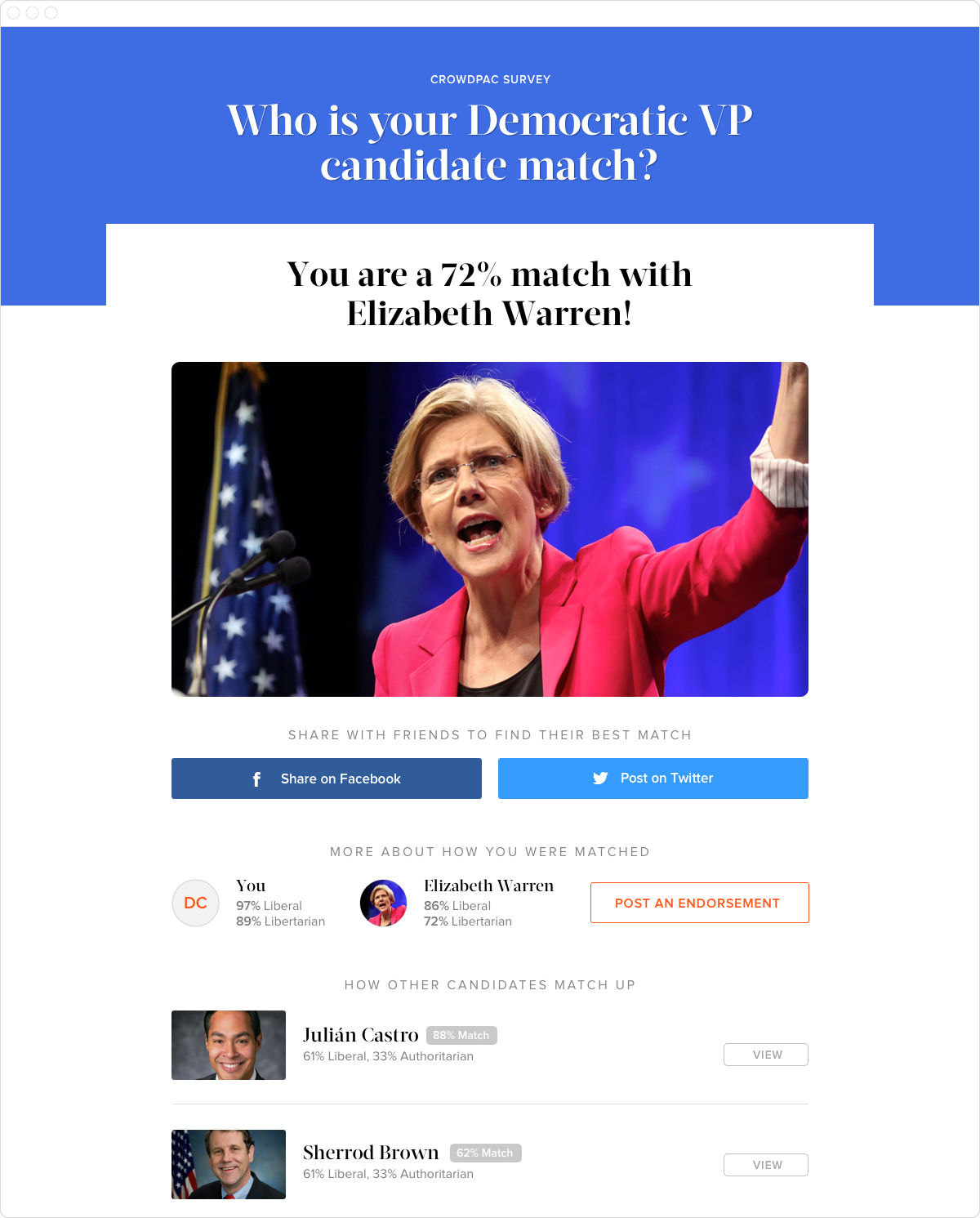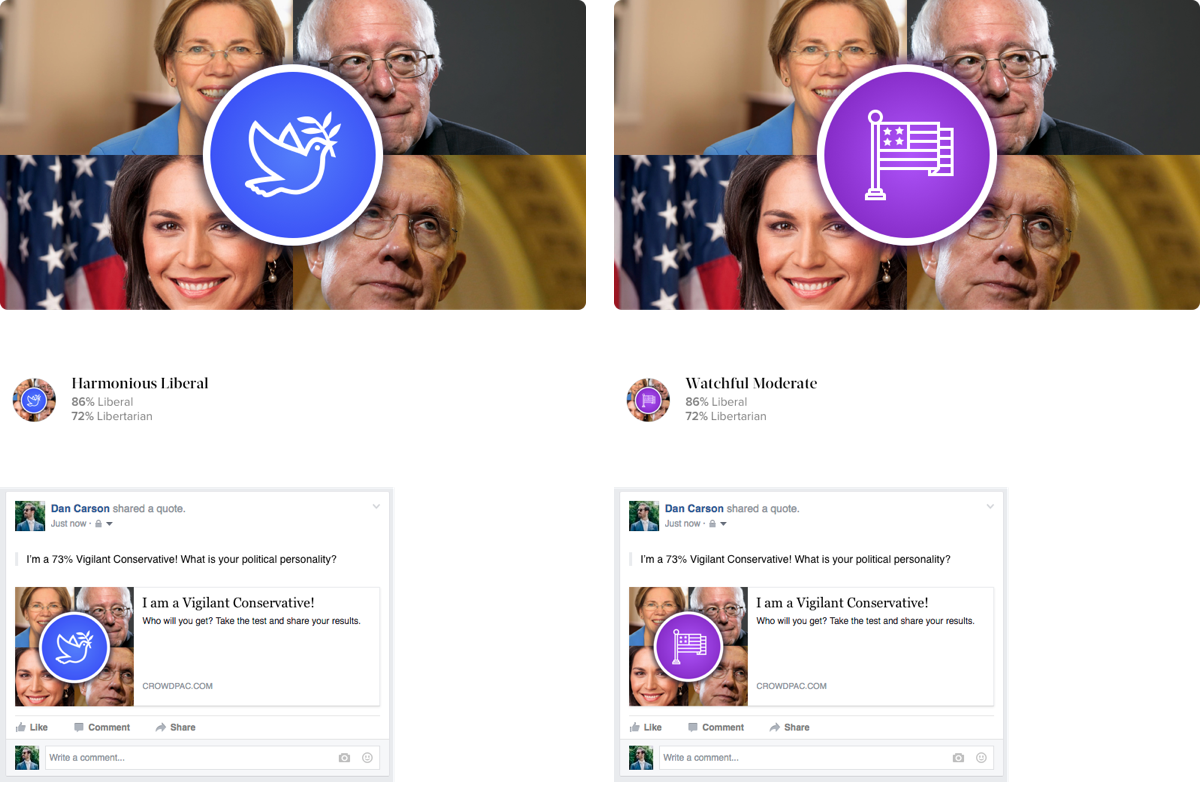Voter Information Tools
Providing objective and accurate information to voters has been at the core of Crowdpac since day 1. We try to make the political process more accessible through candidate profiles, race pages down to the local level, and objective data analysis. This is a collection of the different products we’ve built – ballot tools in the US, political surveys in the EU, and the core experience of our website.
I always approached these problems with a jobs-to-be-done lens, thinking about what a person wants to do. OpenSecrets and Ballotpedia already exist. They are fantastic resources but are too complex for most people. So how do we build something better? The answer was always to make it relevant, make it local, make it topical.
From President to Library Board, it should be easy to learn about the candidates on your ballot.
- Product strategy
- User research
- UX Design
- UI design
- Front-end engineering
- Product management
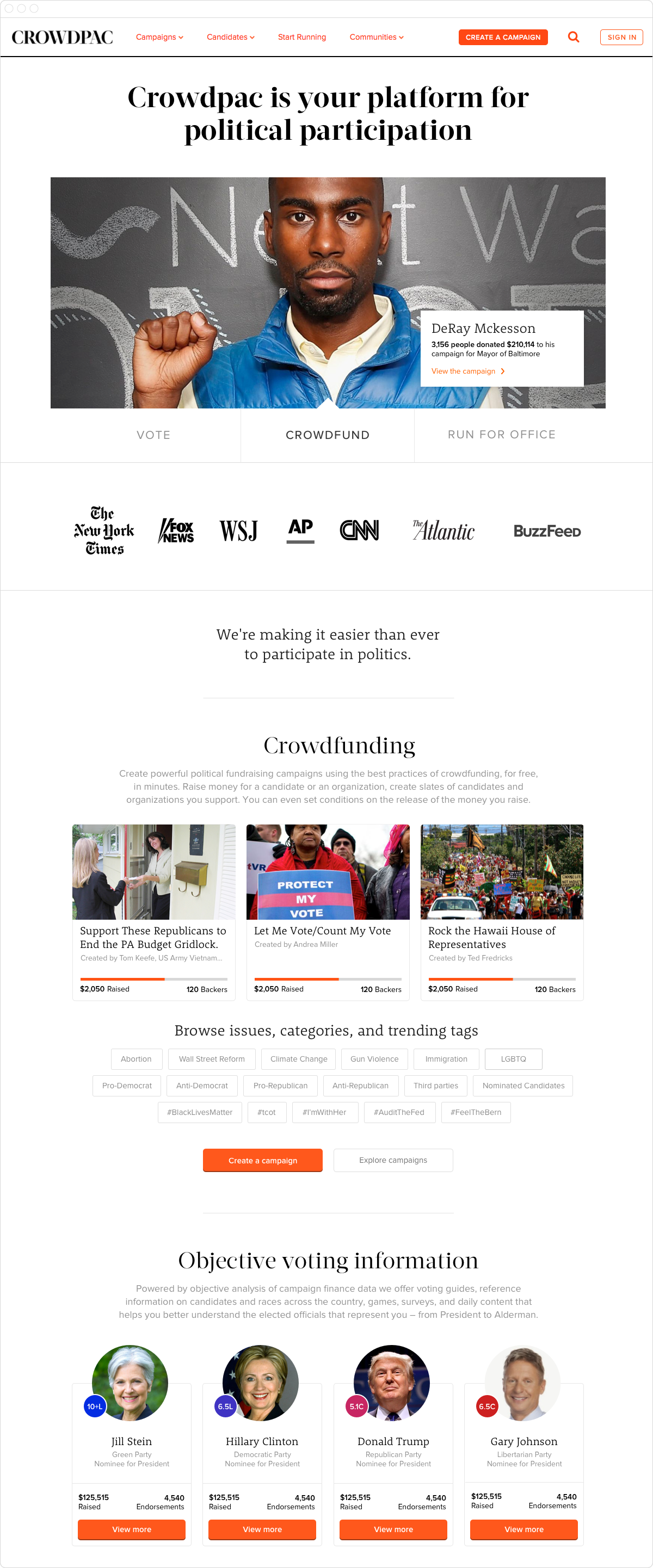
Candidates and Elections
We try to show data for as many candidates and incumbents as we possibly can. When possible, we use our proprietary algorithms to map them ideologically and show where their money comes from. If they are active on the platform, we’ll show the money raised and endorsements from their supporters. It’s all mobile friendly, easily digested, and relevant to the voter.
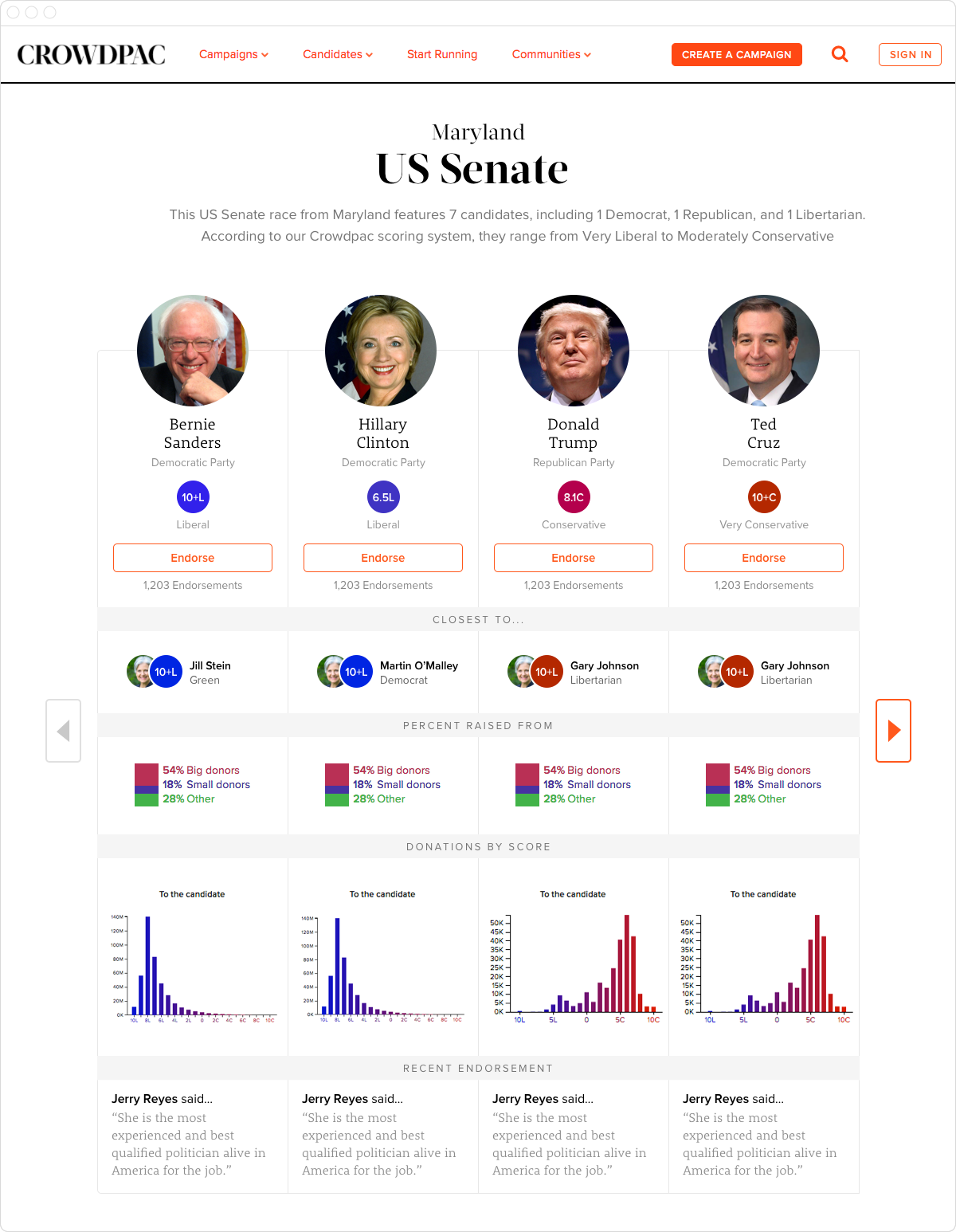
Over time we iterated our race pages away from being a simple index for navigating to candidate pages, and toward being a resource in their own right. The idea was to create a product comparison page where you could see both established and outsider candidates on the same footing, evaluating them side-by-side in a single view. This is a great example of how our product design delivered on the mission of the company – to elevate new voices in politics.
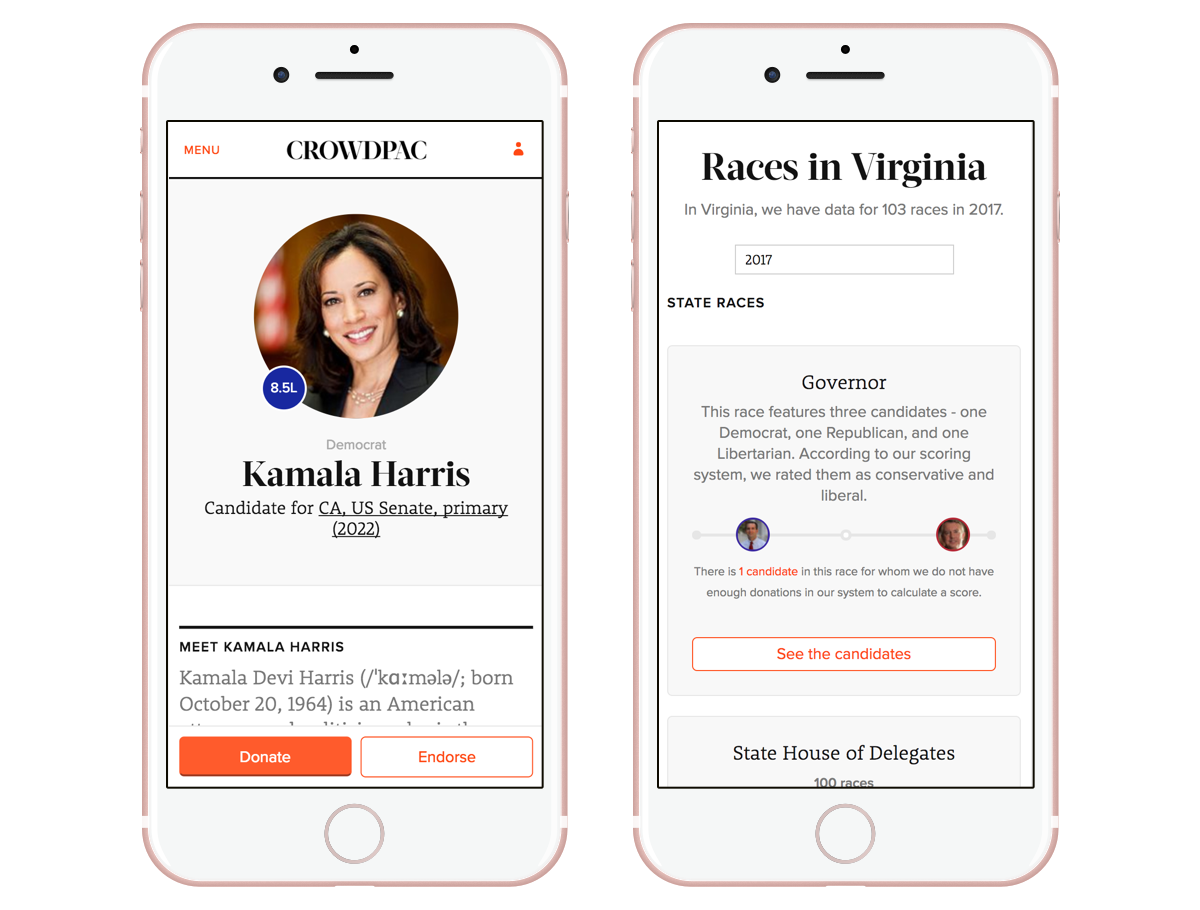
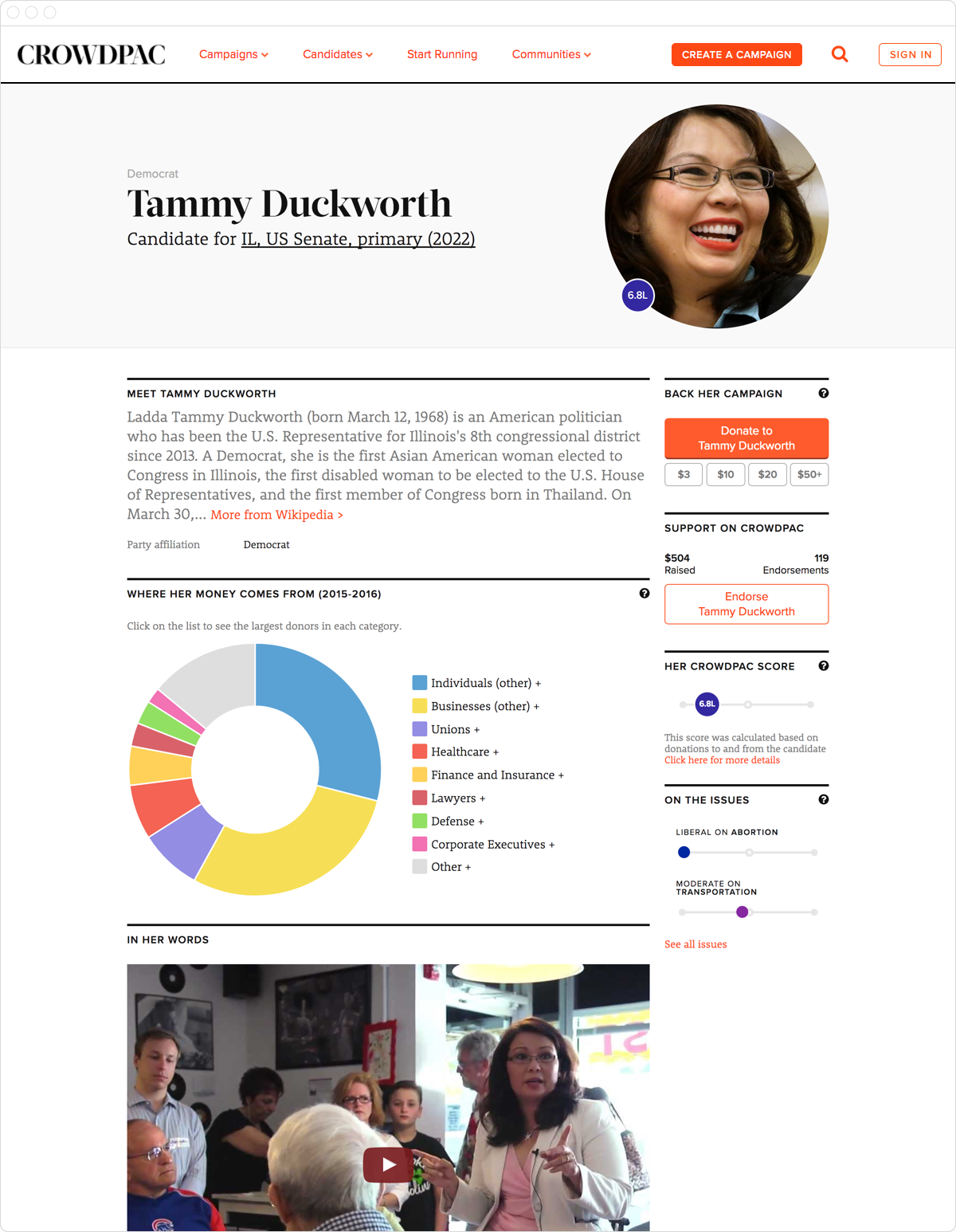
Ballot Tool 1.0
One of the very first projects I worked on at Crowdpac was a ballot tool for the San Francisco elections in 2015. With a short timeline, we designed and built a tool that did several things: match you with candidates after taking a quiz, see 3rd party endorsements from local leaders, and save candidates to a mobile-friendly ballot. While many found it useful, we missed the mark in terms of usability. After the election, I did a user research study to highlight areas for improvement in our next iteration.
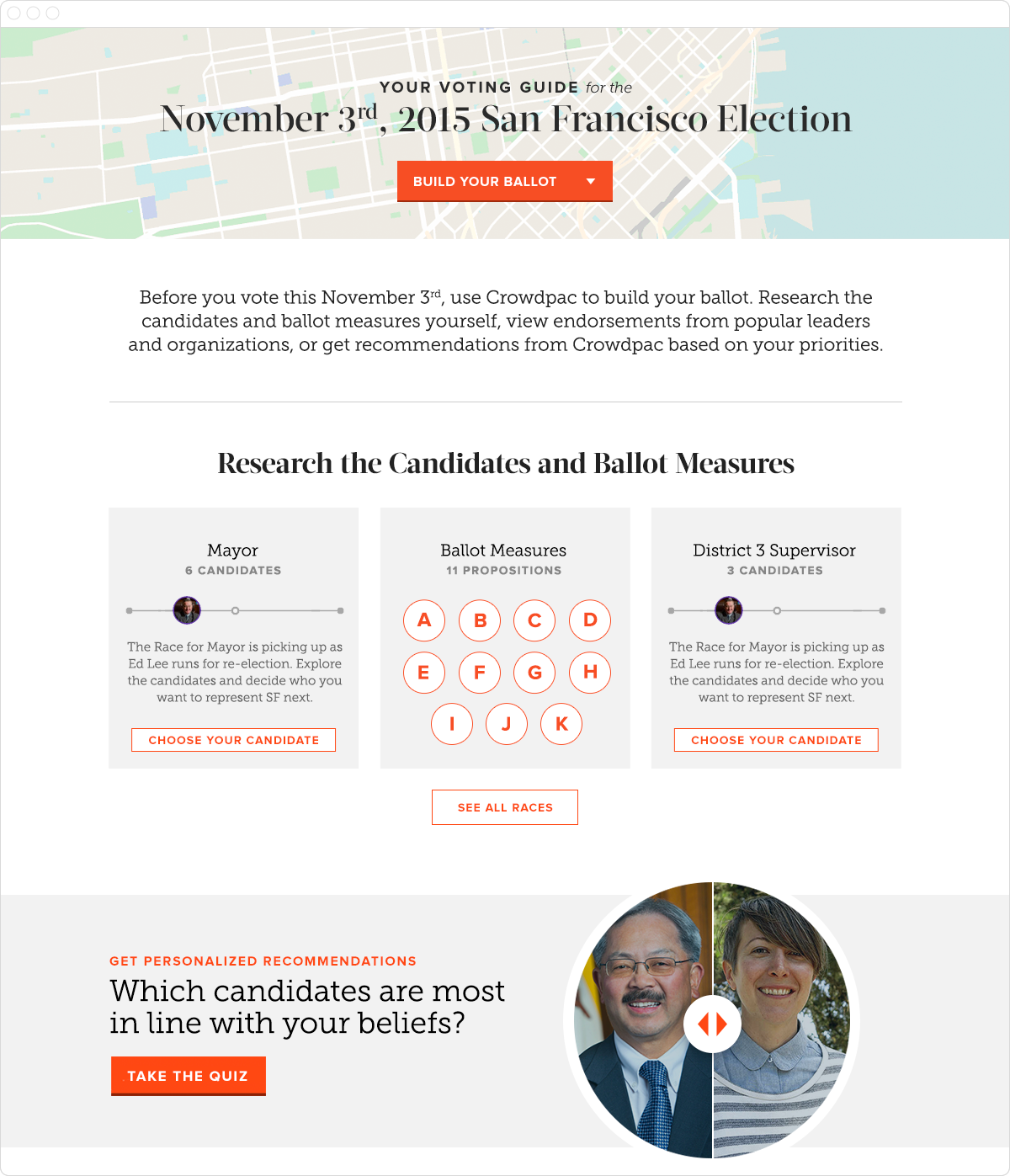
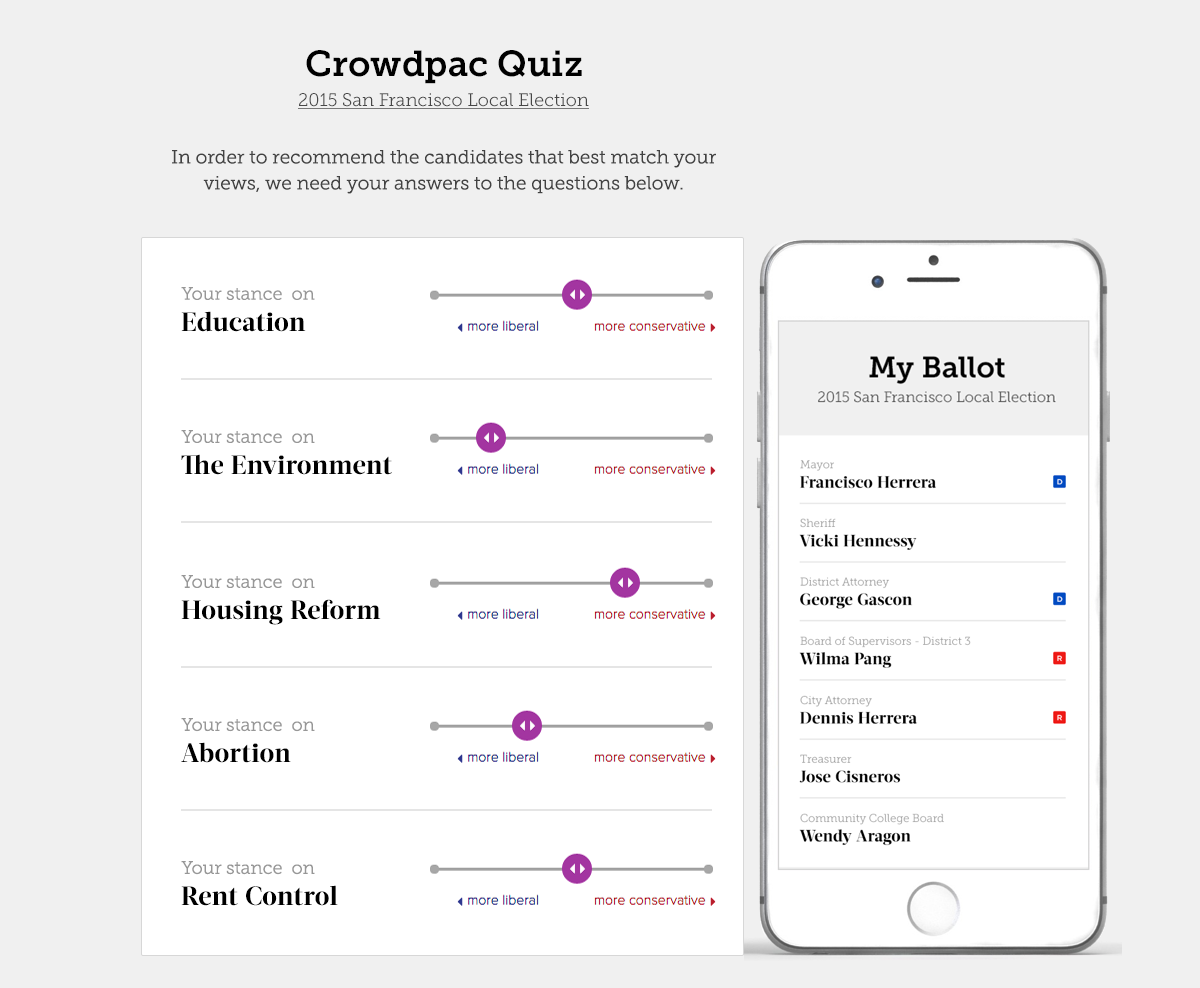
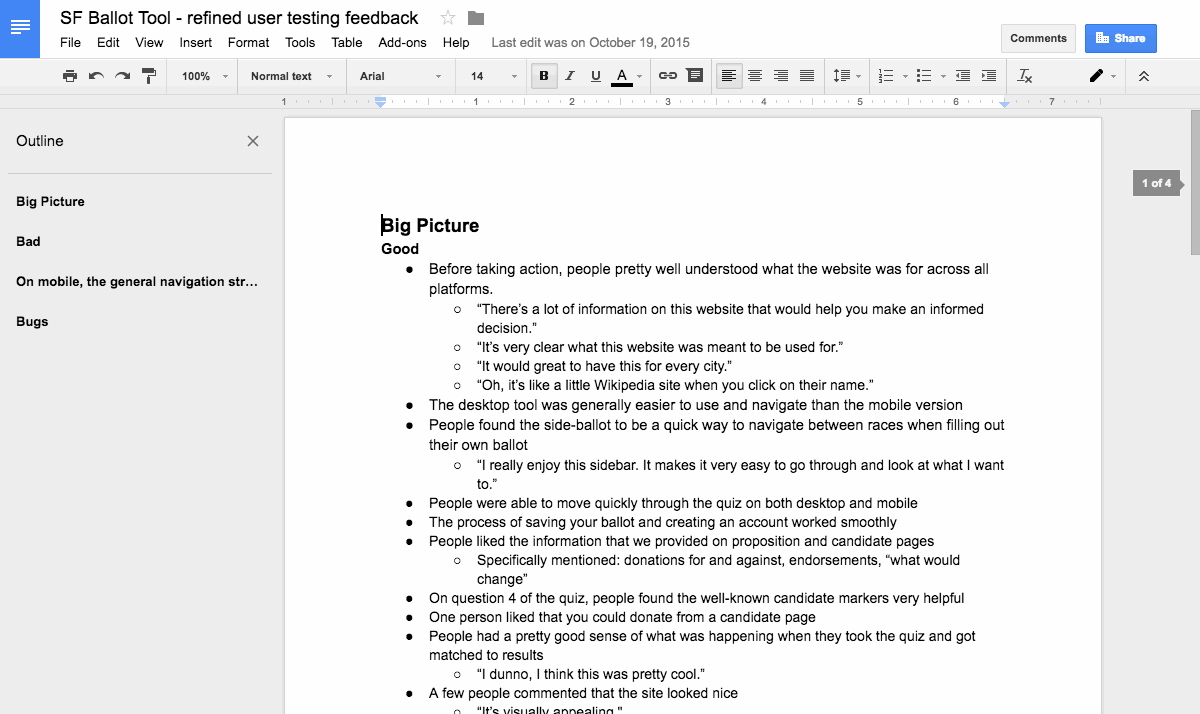
Ballot Tool 1.5
The next version of the tool had a wider scope – to be launched in a dozen cities around the US where we had good data and good relationships on the ground. Based on our usability findings, we drastically simplified the tool. We stripped everything back to a simple page to learn about candidates and save your choices. At this point, we had launched our crowdfunding platform, and we also let voters donate to their entire ballot with a single transaction.
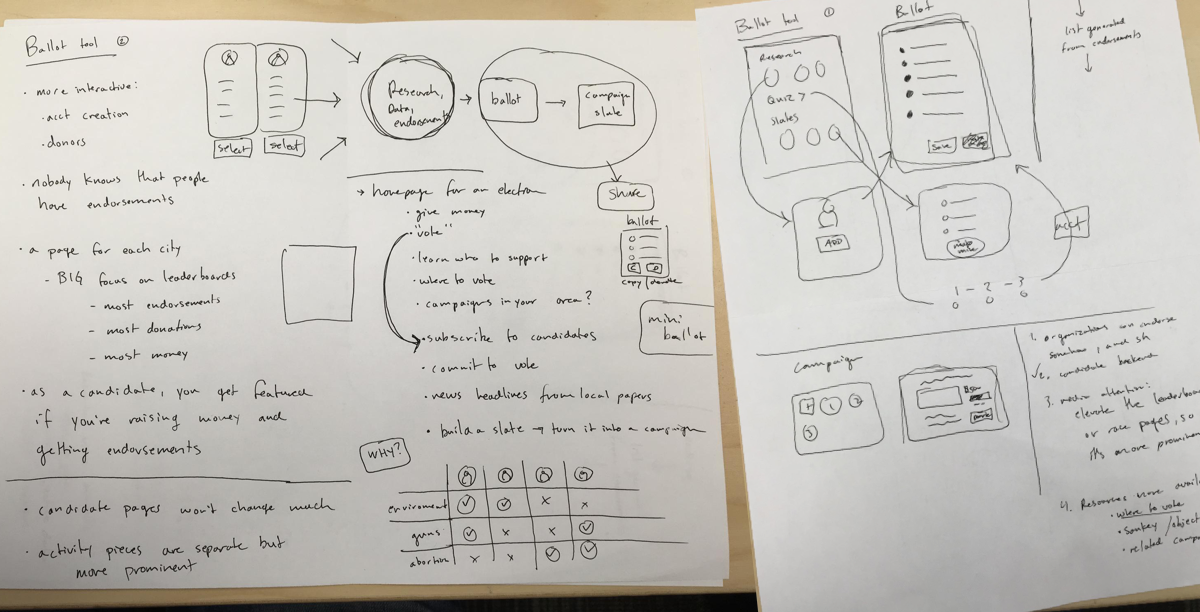
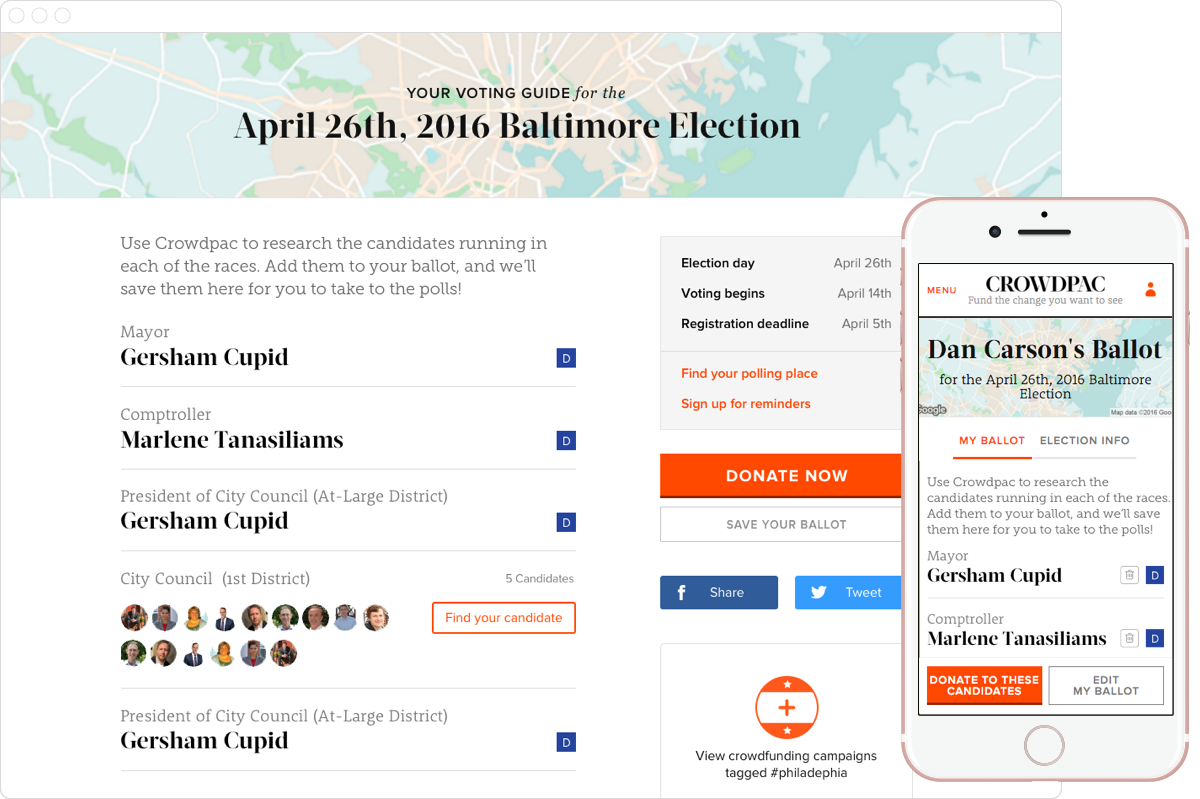
Ballot Tool 2.0
The culmination of our ballot tool work was the 2016 general election. We spent the summer optimizing a survey tool that matched people to candidates, which became a natural funnel for a personalized ballot. Our big leap was the ability for voters to provide their voting address and receive a personalized state and local ballot. We had federal coverage in all 50 states, state coverage in 30 states, and local coverage in the Bay area. By the November, 1.3 million people had taken the survey and over 550,000 had received a personalized ballot.
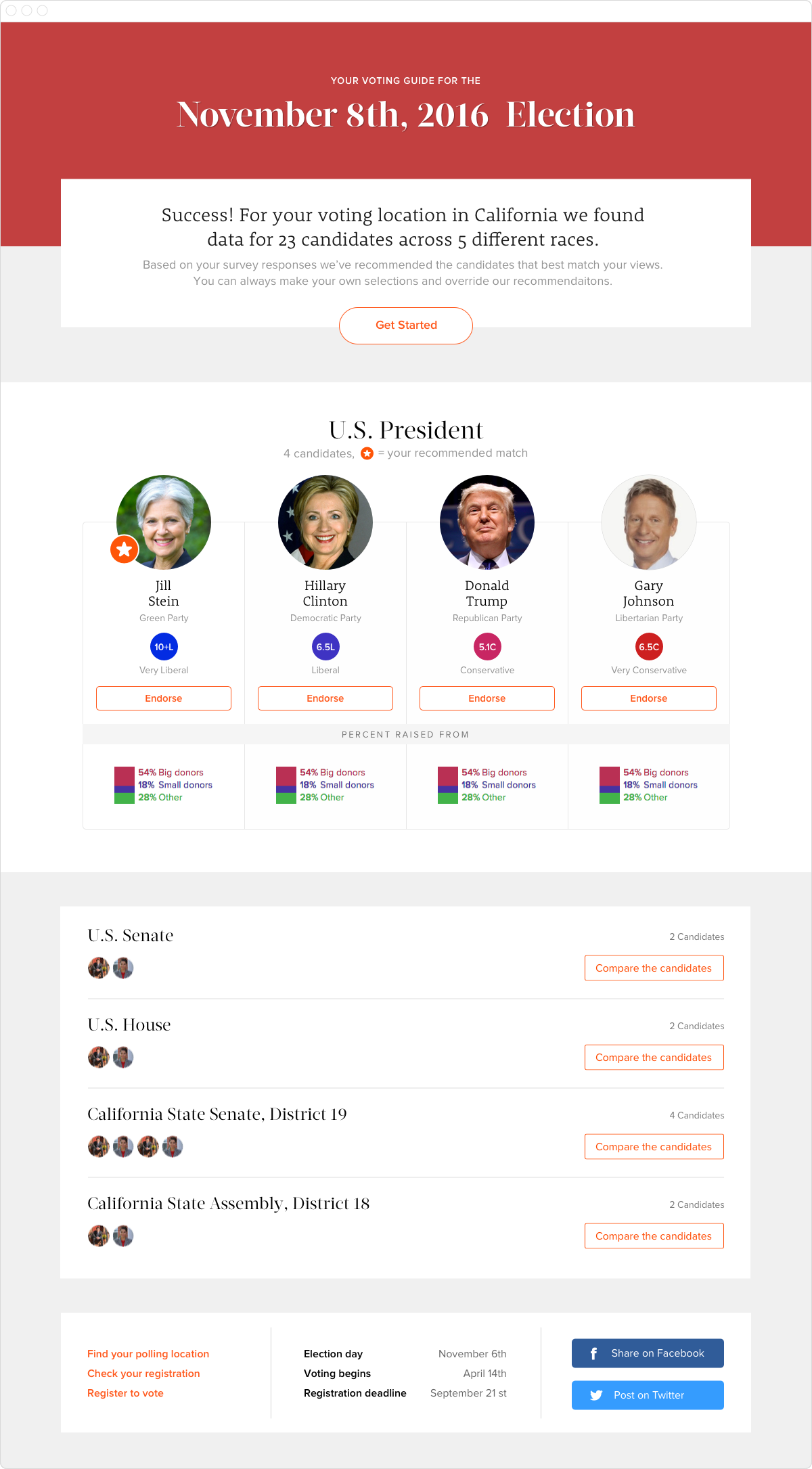
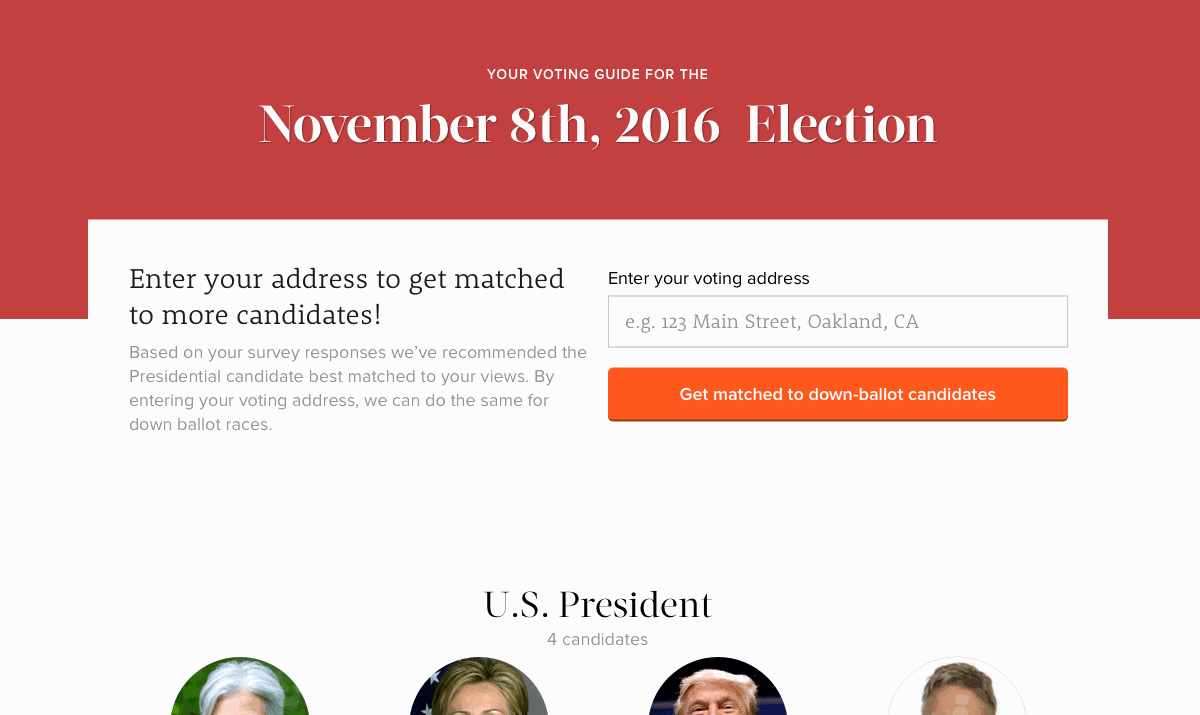
Political Survey Tool
The aforementioned survey tool provided our content and acquisition teams creative ways to engage voters via paid advertising. As an account creation mechanism, it was wildly successful, resulting in over 1.3 million user accounts on the platform for an exceptionally low cost. It was so flexible and powerful that we were able to launch it in the UK and in France, where millions more learned which candidates and positions to support.
